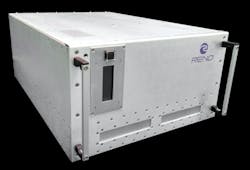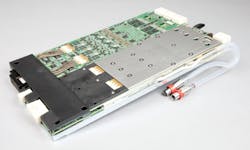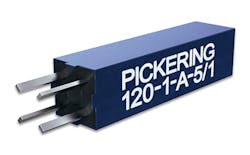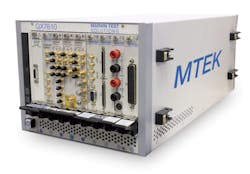SEMICON West events got underway in July with the co-located imec Technology Forum USA (ITFUSA), marking the seventh time the ITFUSA has co-located with SEMICON West. The ITFUSA theme was “Nanobytes creating magic—semiconductor and system scaling beyond tomorrow.” In a keynote address titled “Technology needs a human face,” Luc Van den hove, imec president and CEO, questioned whether nano and digital technology together can create magic, or is magic just an illusion? “I don’t believe in magic as such,” he said, suggesting that what might seem magical today has been the result of hard work.
Other ITFUSA topics included machine learning, scaling, 3D chips, solving the BEOL RC dilemma, and cybersecurity.
At a Tuesday morning press conference, SEMI organizers emphasized the event’s theme: “Smart Starts Here.” Dave Anderson, SEMI Americas president, said, “The industry is doing great—2017 will be a record year. North America is now a $10 billion plus market for equipment and materials.” He added that SEMI’s span of the extended electronics supply chain is reflected in a focus on several verticals: smart automotive, smart medtech, smart manufacturing, and the world of IoT.
In company news, UnitySC at SEMICON West marked its first year as an advanced process-control company developing, manufacturing, and marketing metrology and inspection solutions for heterogeneous integration. The company, an offshoot of FOGALE nanotech Group, made its debut at SEMICON West 2016. The company addresses advanced-packaging, sensor, and power-device applications using optical-based microscopy, interferometry, spectrometry, reflectometry, and other technologies.
Orbotech announced that imec has named its SPTS Technologies company as a new supplier of physical vapor deposition (PVD) solutions for under-bump metallization (UBM) and redistribution-layer processes for next-generation fan-out packaging technologies. imec has selected SPTS’s Sigma fxP PVD solution as the new process tool of record for low-temperature PVD for development of novel fan-out technologies such as micro-bumps for chip-scale packaging.
Several companies highlighted new products. Reno Sub-Systems, a producer of high-performance RF matching networks, RF power generators, and gas-flow management systems for semiconductor manufacturing, announced the latest addition to its lineup. The new Precis generator (Figure 1) offers the highest-power solid-state microwave generator available for semiconductor plasma applications, the company said, adding that its approach to power generation fills a growing need for advanced subsystem technologies to keep the industry on pace with Moore’s law.
Courtesy of Reno Sub-Systems
Advantest chose SEMICON West to highlight the addition of a mixed-signal channel card to its Wave Scale MX product family (Figure 2) for the V93000 platform. The new high-resolution, highly accurate mixed-signal channel card extends the Wave Scale MX product family’s range in testing analog-to-digital and digital-to-analog waveform converters. The card provides high performance and fully independent AC and DC testing across as many as 32 instruments—16 arbitrary waveform generators and 16 digitizers—for either single-ended or differential signals. It has local, temperature-controlled references that ensure the highest DC stability over time, and single-ended signals can be referenced to a ground sense per channel to achieve high fidelity.
Courtesy of Advantest
Advantest also launched the T5822 memory tester—the newest member of its T5800 product series, optimized for wafer-level testing of DRAMs, NAND devices, and other nonvolatile memories used throughout portable electronic devices. The new tester offers high-voltage resources such a level driver and DC testing capability along with an economical compact test head. It also features a memory repair analysis capability to help customers maximize their yields.
Pickering Electronics highlighted a new miniature reed relay with applicability to semiconductor test (Figure 3). The Pickering Series 120 is a range of single-pole reed relays that require a board area of 4 mm x 4 mm. Two switch types are available, a general-purpose sputtered ruthenium switch rated for up to 20 W, 1 A and a low-level sputtered ruthenium switch rated at 10 W, 0.5 A. Sibling company Pickering Interfaces previewed its soon-to-be-released Model 65-221 High-Density Modular LXI Reed Relay Matrix—a new LXI switch system that’s applicable to semiconductor test.
Courtesy of Pickering Electronics
Optimal+ highlighted its efforts to get semiconductor makers and electronics manufacturers to communicate to determine the root causes of faults. The company was emphasizing what it is now calling SQN, or Suppliers Quality Network, which aims to break down barriers between component makers and OEMs in what company representatives called a “win, win” for everyone.
Igus was exhibiting its line of plastics, emphasizing its applicability to reliable, flexible electrical cable guiding—including its ReadyChain systems offering a selection of cables, connectors, and accessories. The company’s products find use in automotive, aviation, machine-tool, medical-equipment, robotics, solar, wind, electronics-manufacturing, radar-equipment, and other industries.
Astronics highlighted its system-level test approach, aimed at smaller nodes that can result in missed transistors during traditional test and at advanced packaging techniques that can drive the cost of test escapes higher. The company highlighted its ATS 5034 system-level test platform, which can process up to 396 devices simultaneously.
Seica exhibited one of its Pilot flying probers for PCB test, but the company’s main emphasis was on a new industrial monitoring solution emphasizing energy-saving requirements and predictive monitoring of events in compliance with the principles of Industry 4.0.1 Seica shared a booth with Microtest, which offers MEMS test; OSAI, which makes MEMS handlers; and CREA, which makes semiconductor test equipment.
National Instruments and Marvin Test Solutions highlighted their PXI semiconductor test systems. NI displayed its Semiconductor Test System, or STS, with an emphasis on RF and wireless device test in conjunction with its vector signal transceiver (STS) technology. Marvin Test Solutions exhibited its TS‐960e PXI Express semiconductor test system and introduced the Marvin Test Expansion Kit (MTEK) Series (Figure 4), which offers a tester upgrade solution for legacy semiconductor test systems.
Courtesy of Marvin Test Solutions
At a show floor presentation, Melissa Grupen-Shemansky, Ph.D., CTO, Flexible Electronics, SEMI, said consumer products dominate with respect to ICs volumes, but growth opportunities for the semiconductor industry are appearing in market verticals. Consequently, SEMICON West this year has focused on verticals such as smart automotive and smart medtech. The latter topic was the focus of a Thursday afternoon session on electronics requirements and solutions for medical technology. Grupen-Shemansky noted that, in general, various elements of the supply chain—from materials to applications markets—don’t communicate well. SEMI’s role, she said, is to fill those gaps. When it comes to medtech, she said, healthcare professionals have no visibility into the IC fab. A connection between IC and healthcare innovators would allow the latter to be more upfront in influencing what semiconductor devices get developed, and it can help semiconductor makers see what functionality is missing that might be useful in the application space.
The 5G digitalization transformation was the topic of a SEMICON West presentation by Sree Koratala, vice president, head of technology, Ericsson. She described 5G, unlike previous wireless generations, as representing a shift from consumer to industry use cases. Ericsson, she said, has a presence in 180 countries and participates in carrying 40% of the world’s mobile traffic. From that vantage point, she said, “Ericsson predicts there will be 29 billion connected devices by 2022—a mind-bogging number—with 18 billion of those being IoT devices.” The IoT embraces cars, sensors, meters, wearables, and buildings all getting connected and will have an economic impact of $11 trillion by 2025.
Koratala’s talk was followed by a presentation on 5G heterogeneous networks, or hetnets, by Cédric Dehos of CEA Leti. He proposed four initiatives to meet 5G requirements for data rate, latency, reliability, and power consumption: boost spectral efficiency; design low-cost, low-power ICs for sensors and IoT; develop efficient, large-bandwidth front-end modules; and offload data traffic to millimeter-wave and small-cell access points. He concluded that the 5G roadmap remains unclear.
At a private event Wednesday evening, Xcerra introduced a new deskside system called the DxV. Executives rolled it out (it weighs 100 lb or so fully configured with instruments, according to Xcerra personnel present at the unveiling) and booted it up within a few minutes. Xcerra executives described the system as offering “… full semiconductor ATE performance in a desktop PC footprint.” The system can work with PXI instruments in a separate chassis although the base unit accepts Xcerra’s proprietary DiamondX cards.
Reference
- Corli, L., “Energy saving and predictive event monitoring in Industry 4.0,” EE-Evaluation Engineering Web Exclusive, July 24, 2017.





